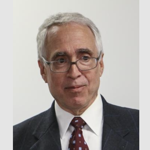Change Should Be a Natural Process
![]()
pring may be coming early to Congress with the sunshine of a budget surplus, but winter is likely to last much longer for federal agencies under pressure to do more with less. With the federal government surplus destined for tax cuts or Medicare expansion, federal agencies can hardly expect a vast infusion of new dollars or staff. At the same time, they will get no let-up from Vice President Al Gore on the demand for innovation.
There is no question that the federal government can innovate. That much is obvious from the four agencies that won the 1997 Ford Foundation Innovation Awards. The IRS' Telefile program and the Food and Drug Administration's new drug approval process both won $100,000 awards. The Environmental Protection Agency's 33/50 program and the Treasury Department's Disarming the Criminal project took home $20,000 prizes.
Nor is there any question that the federal government has ideas. That is clear from the projects under way at the National Performance Review's reinvention laboratories. There are so many projects that NPR's Web site (www.npr.gov) warrants a search engine. But the problem is getting the ideas adopted and keeping them alive afterwards. Look at any inventory of innovation from 10 years ago and many of the good programs will be long dead.
Continual Change
Federal agencies are not designed to innovate naturally. Any organization can innovate once. Just threaten enough layoffs or pour on a big budget crisis, and most agencies will innovate to survive. The real challenge is to innovate twice, thrice and more, thereby making it a more common event.
Too often, innovation is something that heroic individuals produce in spite of relentless bureaucratic nit-picking, intense public pressure, faithless leadership and antiquated management systems. Once the heroes leave town or are ground down, their innovations quickly perish. It is death by a thousand paper cuts.
There is another way: natural innovation. Even as we celebrate today's heroes who struggle mightily to bring change forth against the odds, we must challenge agencies to change the odds. By removing the barriers that keep good ideas down and providing the incentives to release the creativity that already exists, the federal government could reap a windfall of programs that would keep the Ford Foundation awards committee busy through the next century. Consider four lessons from the innovative organizations I have watched over the years, most of which have been in state and local government or the nonprofit sector.
First, the organizations constantly ask themselves why they exist, whom they serve and how they will know when they succeed. Instead of praying for a miracle during turbulent times, innovative organizations use crisis as a lever for new ideas and harness market pressure to stay alert. For a compass, they use measurable results, not hunch or anecdote, and they are not afraid to ask those they serve for criticism.
Second, the organizations work hard to break down the barriers to change. They keep their hierarchy relatively flat, give their employees authority to solve problems and limit the red tape that plagues so many public agencies.
Third, these organizations' leaders spend their time and energy creating conditions in which others can succeed. They allow themselves enough leeway to make the mistakes essential to innovation. After all, change is trial and error, not trial and automatic success. These change agents do the mundane work that keeps new ideas flowing, dredging out the administrative sediment that builds up over time. They can be just as heroic as the most celebrated innovator, but they submerge their own glory for the broader mission.
Finally, innovative organizations are well-managed. They measure outcomes, maintain tight fiscal controls, pay their bills on time, limit their financial exposure, and demand high performance from their employees.
No Need for Superstars
Building an innovative organization requires support from political leaders and a bit of luck. It does not require perfection. These organizations can tolerate a remarkable level of trial and error, if they keep good books and don't make the same mistakes twice. Nor does change require superstars. Ordinary people actually do quite well.
There will always be jobs for heroes, of course. No matter how hard we work to reinvent government, change will still be resisted in top-heavy bureaucracies led by careless leaders who oversee broken management systems. But we ought not take such hostility as an immutable fact of organizational life. Nor should we assume that struggling against the odds is always the right job for heroes. It is far better to use some of that heroic energy to create innovative organizations than to watch the fruits of defiance decay with the passage of time. Absent that effort, change is destined to remain a random event.
Perhaps it is time, therefore, to launch a new award for the grunt work that makes ordinary innovation possible. Celebrating the process by which change occurs may be far more important in the short term than celebrating the reforms themselves. Unless innovation gets easier, it will never become more frequent. And that is a cold forecast, indeed. n
Paul C. Light is author of Sustaining Innovation: Creating Nonprofit and Government Organizations that Innovate Naturally (Jossey-Bass, 1998).
NEXT STORY: New Procedures Getting Air Time







